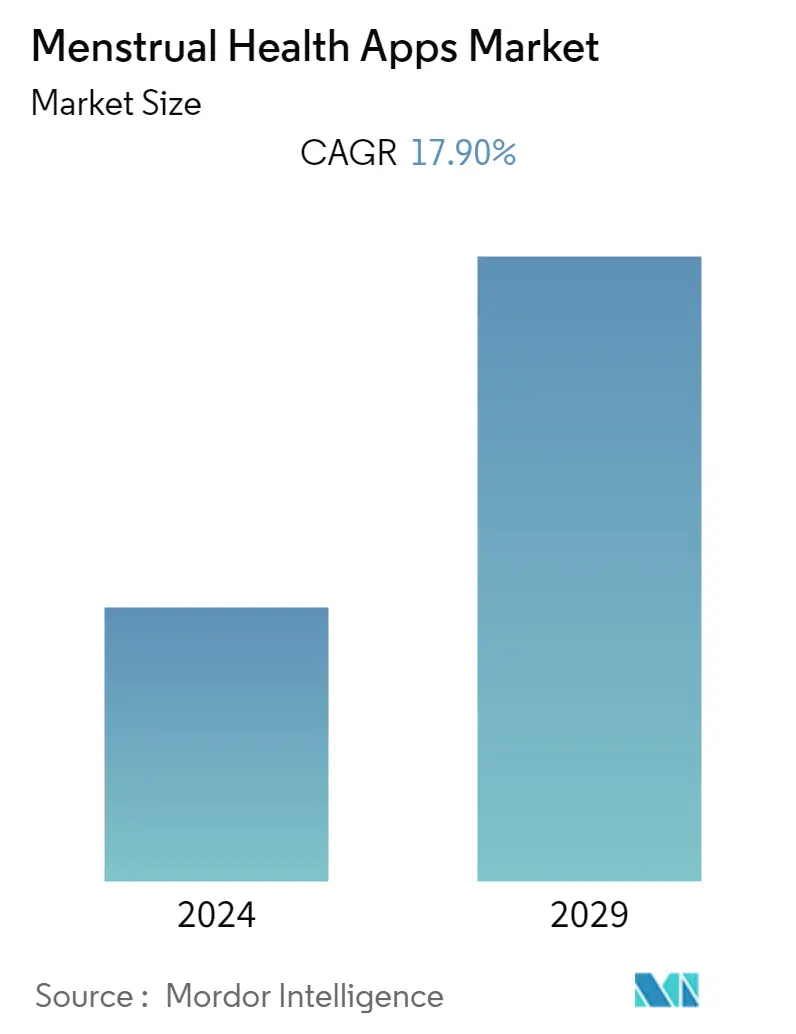Market Size of Menstrual Health Apps Industry

| Study Period | 2021 - 2029 |
| Base Year For Estimation | 2023 |
| Forecast Data Period | 2024 - 2029 |
| CAGR | 17.90 % |
| Fastest Growing Market | Asia-Pacific |
| Largest Market | North America |
Major Players
*Disclaimer: Major Players sorted in no particular order |
Need a report that reflects how COVID-19 has impacted this market and its growth?
Menstrual Health Apps Market Analysis
Over the next few years, the market for menstrual health apps is expected to register a CAGR of 17.9%.
The COVID-19 pandemic had a positive impact on the market. Menstrual health apps witnessed significant spikes in the adoption rate and recorded a dramatic rise in the number of users. Female communities across the globe were using femtech applications to maintain a healthy lifestyle and well-being. For example, the NCBI published a study in 2021 that looked at the impact of COVID-19 on menstrual cycle distress and the use and adoption of mobile apps by women during the pandemic.As per the results, around 77.9% of respondents reported using menstrual health-related mobile apps during the pandemic. This signifies that digital health technologies for women gained traction during the pandemic.
In addition, established players are developing their apps in multiple languages to expand their clientele across the globe. For instance, Flo Health Inc. launched Flo, a menstrual and pregnancy tracking app, in 22 languages. The app allows users to track pregnancies and monitor fetal development and offers personalized daily informational content. Furthermore, Flo reported that around 35 million users were using its app monthly in 2020, with a total of 150 million installations.
Rising consciousness about menstrual health among women, the rise in digital literacies and smartphone adoption, increased internet accessibility, and the incidence of growing awareness of menstrual health hygiene are the factors driving the growth of the menstrual health apps market over the forecast period.
The rise in digital literacies and smartphone adoption is also propelling the growth of the market; for instance, in 2021, the International Telecommunication Union showed that uptake of the internet has accelerated during the pandemic. In 2019, 4.1 billion people (54 percent of the world's population) were using the internet. Since then, the number of users has surged by 800 million to reach 4.9 billion people in 2021 (63 percent of the population).
In addition, new menstrual app launches and strategic activities by major players in the market are positively affecting the growth of the studied market. For instance, in December 2020, the LAIQA brand launched an app called Period Pal. This app can chart their menstrual cycles, as well as their energy levels, symptoms, and ovulation cycle predictions.
Furthermore, the growing focus of companies on developing advanced services and adopting various business strategies, such as collaborations and acquisitions, to maintain their market position is also contributing to market growth. For instance, in May 2022, Fertility Company Aprecicity acquired Period Tracking and Community Support App Woom, a women's health app offering period tracking and community support for those trying to conceive. Therefore, owing to the aforementioned factors, it is anticipated that the studied market will witness growth over the analysis period.
